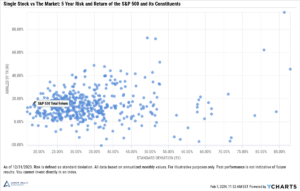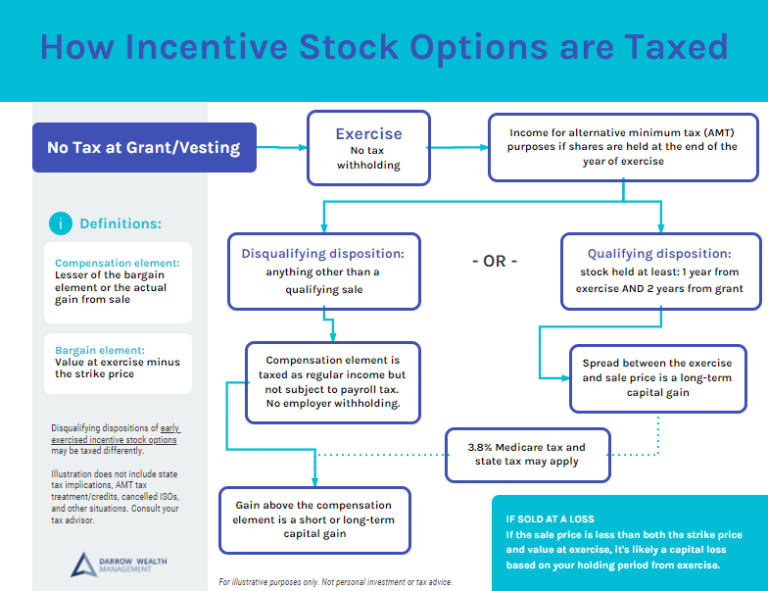Since 2019, the total return on the S&P 500 is nearly 97% (almost 27% on an average annualized basis).¹ This outperformance is leaving many investors nervous, waiting for the other shoe to drop. Yes, current market conditions certainly imply lower returns for the stock market in the years ahead. But that doesn’t mean it’s going to happen or the market is destined to crash, either. The financial markets have many simultaneous narratives and now is no different. Here are a few trends and headwinds investors should consider in 2022 and beyond.
The S&P 500 has almost doubled since 2019
There are plenty of reasons to be skeptical about stocks maintaining their extraordinary performance going forward. The S&P 500 closed at new all-time highs in 8 of the last 10 trading days through 11/10/21.
Total returns for the S&P 500 have been well above the long-term average the last few years:
- 2019: 31.5%
- 2020: 18.4%
- 2021 YTD to 11/9: 26.2%
What does this mean for the market outlook going forward?
Market outlook – where do we go from here?
As always, there are multiple narratives playing out at once. As you consider how to position your portfolio, note that stock market predictions generally don’t provide a solid foundation for a long-term investment strategy. History can serve as a guide, but no one has a crystal ball.
Monetary policy
The Federal Reserve has announced it will begin tapering its large monthly asset purchases in December 2021. The process should be complete next year. If the economy continues to recover as expected, it’s likely that they will begin to raise the target interest rates in 2022.
Why does this matter?
These highly accommodative policies have contributed to the outperformance in the stock market. Asset purchases flood the market with liquidity and supported prices of risk assets. Interest rates near zero hurt yields on new bonds, leaving investors with cash to invest few (if any) alternatives to equities.
When rates rise, it should have the opposite effect: bond investors in the primary market will earn higher coupons, which, in turn, will put pressure on prices of outstanding bonds in the secondary market.
Rising interest rates could also hurt corporate profits through higher borrowing costs. Individuals can expect to earn a bit more on cash, though the tradeoff is likely higher rates on consumer loans and mortgages. Low interest rates have contributed to soaring real estate prices, which is great if you’re a seller.
Fiscal policy and Covid programs
Americans are still flush with cash following massive fiscal stimulus programs to support the economy during Covid-19. The trillions of dollars in payments have padded bank accounts, increased demand for goods and services, and periodically disrupted the stock market as Reddit meme traders look for something fun to do with their ‘stimmy‘ checks.
In addition to the stock market, stimulus payments increased consumer spending. This added demand has put new pressure on an already strained global supply chain. Worker shortages persist as many older Americans retired during Covid and others left the workforce, perhaps to care for family or children. The result has been a prolonged spike in inflation. Should it persist, the Federal Reserve may accelerate interest rate hikes.
The demand benefitted many businesses. J.P. Morgan reports year-to-date earnings-per-share growth is over 67% for S&P 500 companies, up from the 6% average between 2001-2020. However, analysis expect the rate of growth to moderate over the next few years. Supply chain pressures may continue through 2022 or 2023 and it’s unclear whether businesses can continue to pass price increases onto consumers.
Finally, although the infrastructure bill has passed, the Build Back Better legislation is still in flux. Tax increases for corporations could impact profit margins, while additional fiscal support for individuals could boost top line revenues and keep inflation up.
Valuations are high, so stocks are expensive
The factors above contribute to lofty equity valuations. The forward price-to-earnings ratio for the S&P 500 is 21.71.² This is up from the 16.81 average over the last 25 years. Current valuations are a factor in future returns. Based on the forward P/E ratio and historical data, J.P. Morgan estimates average annualized returns for the S&P 500 could be flat over the next 5 years.³
Does that mean you should sell to cash because the market is high? No! (Actually, investing on days where the S&P 500 closed at a new all-time high can actually produce better returns than when the market didn’t set a record.)
First, the J.P. Morgan analysis revealed only 40% of the variation in historical total returns could be explained by forward P/E ratios. In another words: 60% of the time stocks will go up or down for other reasons.
Second, it’s nearly impossible to time the next downturn or predict the severity. Going to cash can be devastating for investors. Many later realize there aren’t any ‘all clear’ smoke signals to get back in. Market timing requires you to successfully time it twice: selling at the top and having the courage to buy at the bottom (assuming you can spot it).
Often, time in the market is better than trying to time the market. For example, even if you bought at the highs before the financial crisis, you’d still be better off staying invested than if you sold before the bottom and got back in during the recovery.
Focus on what you can control
Stocks don’t always go up and we can’t control when they’ll go down. Investors should take inventory of their holdings and objectively assess their exposure to risk…and appetite for it.
For example, if you have a concentration in company stock after an IPO, assess your exposure and consider taking some profits when the lockup expires. If you’re riding the wave from a big bet in a winning investment, consider which would be worse over the next 12 months: if you diversify and the stock doubles or if you don’t sell and it gets cut in half? There’s no right or wrong answer, but it’s a good gut check.
Diversification can help protect investors against volatility, but it’s not a magic shield. Rather than focusing on the market outlook for the next one or two years and trying to pick sectors or time the market, take a long-term view and consider positioning your portfolio accordingly.
This article was written by Darrow Wealth advisor Kristin McKenna, CFP® and first appeared on Forbes.
¹ Source: YCharts, data as of 11/9/2021
² Source: J.P. Morgan, data as of 11/8/2021. Guide to the Markets.
³ Source: J.P. Morgan, data as of 11/8/2021. Guide to the Markets.










